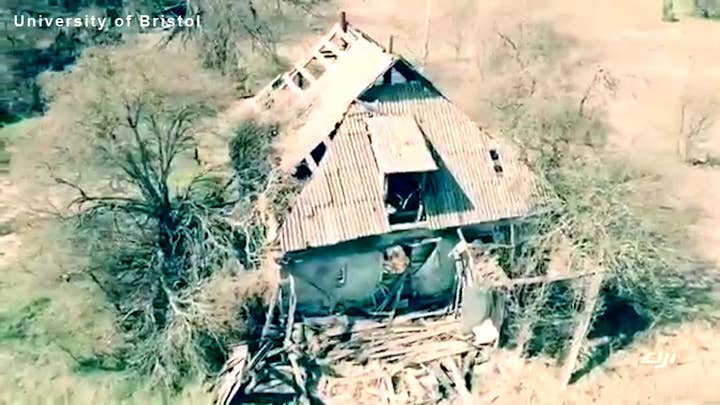10 interesting facts about the Chernobyl nuclear disaster
Learn about the world’s worst nuclear disaster that befell a Chernobyl, Ukraine power plant and left its effects still being felt today.
On April 26, 1986, the world's worst nuclear disaster befell the Chernobyl, Ukraine Power Plant. Unlike the 2011 Fukushima, Japan nuclear crisis, the Chernobyl reactor explosion was caused by human error instead of a natural disaster.
On that spring day more than 30 years ago, routine maintenance was scheduled at V.I. Lenin Nuclear Power Station’s fourth reactor and workers planned to use the downtime to test whether the reactor could still be cooled if the plant lost power. However, during their test, workers violated safety protocols and power surged.
Though there were attempts to shut down the reactor entirely, another power surge caused a chain reaction of explosions inside the plant. Finally, the nuclear core itself was exposed, spewing a cloud of radioactive material into the atmosphere that billowed across northern and western Europe, reaching as far as the eastern United States.
CHERNOBYL SHOCKER AS FUNGI THAT EATS RADIATION FOUND INSIDE NUCLEAR REACTOR
Despite the death of two people in the explosions, the hospitalization of workers and firefighters, and the danger from fallout and fire, no one in the surrounding areas was evacuated until about 36 hours after the disaster began.
The Soviet Union evacuated 335,000 people. Almost 30 people initially died as a result of the explosion and more than 100 were injured. The eventual death toll from Chernobyl is subject to speculation and dispute – with calculations ranging from the thousands to the hundreds of thousands. Soviet authorities did not immediately admit to the explosion and it dented the image of reformist Soviet leader Mikhail Gorbachev, who had earlier launched his ‘glasnost’ policies for greater openness in Soviet society.
Even after the last person who was alive on the day of the explosion dies, other deaths may be attributable to Chernobyl because of the radiation fallout that has entered the food chain.
The United Nations Scientific Committee on the Effects of Atomic Radiation reported that more than 6,000 children and adolescents developed cancer after being exposed to radiation from the incident, although some experts have challenged that claim.
CLICK HERE FOR THE FOX NEWS APP
Shrouded in secrecy, the incident was a watershed moment in both the Cold War and nuclear history. Now, over 30 years later, scientists still estimate the 19-mile-wide "exclusion zone" will not be habitable for at least 3,000 years due to dangerously high contamination levels. Containment efforts and monitoring continue and cleanup is expected to last until at least 2065. The disaster has been estimated to cost some $235 billion in damages.
Here are 10 of the most interesting facts about Chernobyl.
1. Chernobyl may have actually been a boon for wildlife.

File photo - A wolf stands in a field in the 18 mile exclusion zone around the Chernobyl nuclear reactor near the village of Babchin some 217 miles southeast of Minsk, Feb. 1, 2008. (REUTERS/Vasily Fedosenko)
In the immediate aftermath of the accident, an area of about four square miles became known as the “Red Forest” because so many of the trees turned reddish-brown and died after absorbing high levels of radiation.
However, this area “has paradoxically become a unique sanctuary for biodiversity,” the Chernobyl Forum declared in 2005. Due to the exclusion of human activity around the shuttered plant, the numbers of some wildlife – including wolves, bears, eagles, lynxes, and elk -- have increased.
Even as some species apparently thrive, the radiation has proven to cause significant and potentially deadly abnormalities in others, such as birds with deformed beaks, elevated levels of cataracts, albinism, and lower rates of beneficial bacteria.
2. Chernobyl has become a spooky tourist attraction.

This photo taken Wednesday, April 5, 2017, shows a gymnasium in a school in the deserted town of Pripyat, some 3 kilometers (1.86 miles) from the Chernobyl nuclear power plant Ukraine. Once home to some 50,000 people whose lives were connected to the Chernobyl nuclear power plant, Pripyat was hastily evacuated one day after a reactor at the plant 3 kilometers (2 miles away) exploded on April 26, 1986. The explosion and the subsequent fire spewed a radioactive plume over much of northern Europe. (AP Photo/Efrem Lukatsky) (The Associated Press)
Although the exclusion zone is still uninhabitable, the Ukrainian authorities opened up the area to tourism in 2011. Since then, guides regularly take in visitors to view the wildlife as well as to explore the hastily abandoned ghost towns that pepper the landscape.
Pripyat, for example, once had a population of more than 45,000, including most of the plant workers and their families. In order to minimize exposure to radiation, the guides carry dosimeters and instruct their customers not to eat or smoke outside.
Following the airing of the 2019 HBO miniseries "Chernobyl," tour agencies have reported a 40 percent increase in tourism.
3. There was no containment building.
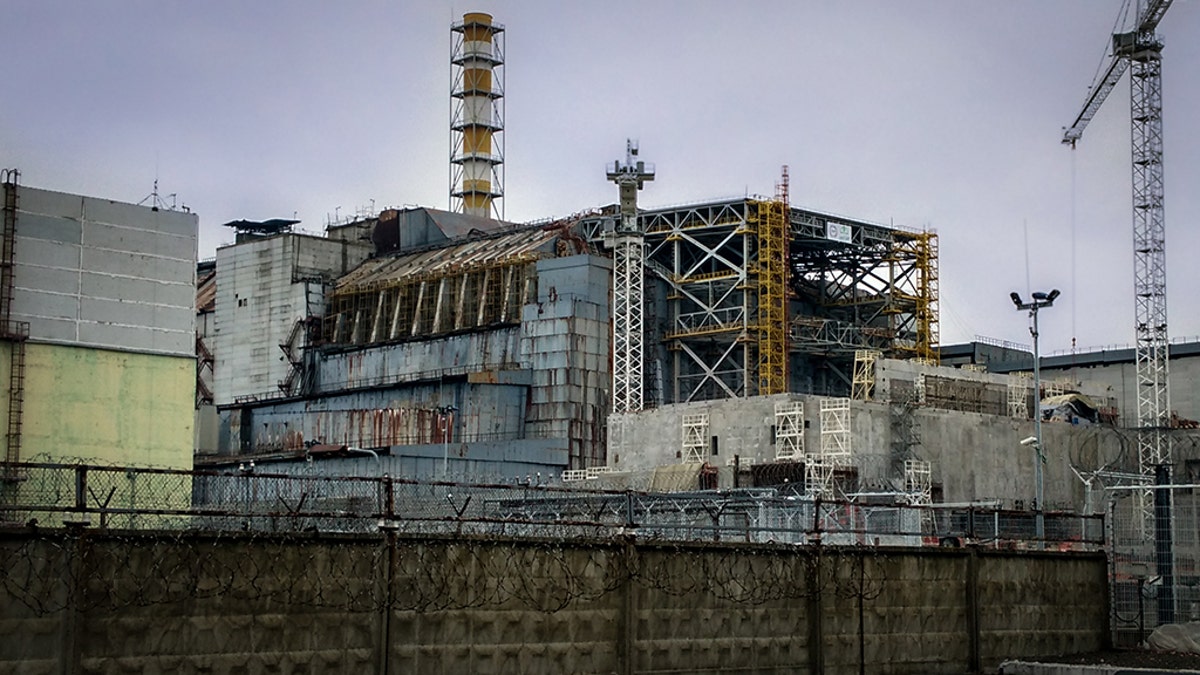
The ruined 4 reactor of Chernobyl nuclear power plant in in 2016 (iStock)
Chernobyl didn't have a couple of important safety measures in place. There was no containment building or a gas-tight shell that surrounds the nuclear reactor. The structure is usually dome-shaped and made of steel-reinforced concrete. It is designed to confine fission products that may be released into the atmosphere during an accident.
In addition, the reactor's emergency safety systems had been turned off. In order to perform their maintenance test, workers unwisely disabled the emergency core cooling system and other key safety equipment. A chain of operating mistakes then ensued, resulting in the buildup of steam that caused the reactor to overheat.
4. The greatest harm ended within weeks of the blast.
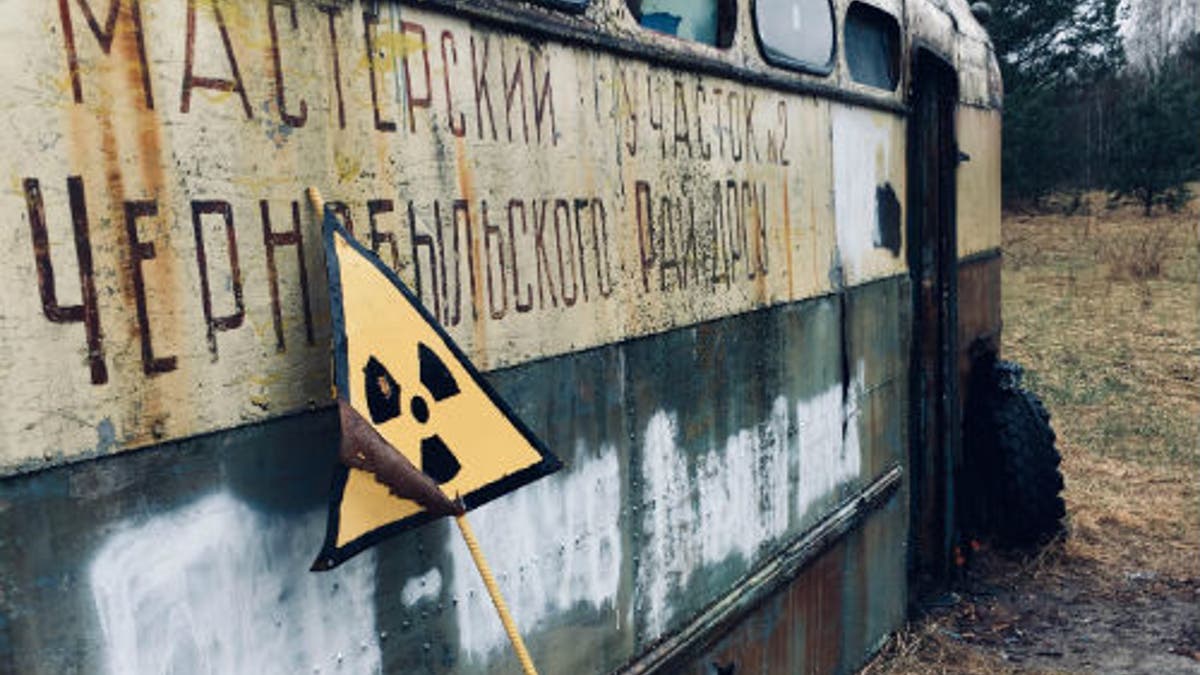
An abandoned bus belonging to the Chernobyl Road Repairing and Building Service. (Tom Scott, University of Bristol)
The greatest harm from radiation after the blast happened within the first few weeks. Just 15 minutes after the Chernobyl explosion, the radioactivity had dropped to one-quarter of its initial value. After one day it had dropped to one-fifteenth. And, after 3 months it had dropped to less than one percent. The plant didn’t actually close until years later.
When the Unit 4 reactor exploded, the other three reactors at the Chernobyl nuclear power station were also shut down. But they were all restarted within a year and a half or so, despite international condemnation. Thousands of plant operators continued going to work, only to see a turbine hall fire prompt the closure of Unit 2 in 1991.
5. The Soviet Union attempted a cover-up of the disaster.
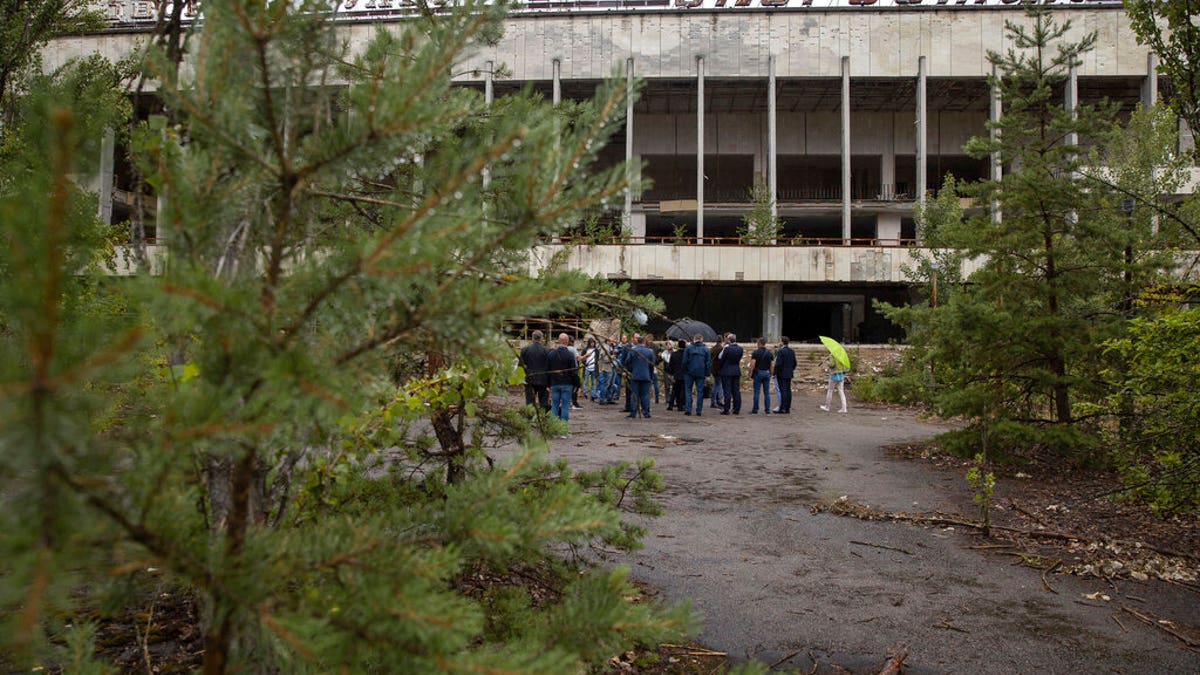
Ukrainian President Volodymyr Zelenskiy and other officials visit the abandoned city of Prypyat some 3 kilometers (1.86 miles) from Chernobyl in Prypyat , Ukraine, Wednesday, July 10, 2019. A structure built to confine radioactive dust from the nuclear reactor at the center of the 1986 Chernobyl disaster was formally unveiled on Wednesday.(Ukrainian Presidential Press Office via AP)
In the immediate aftermath of Chernobyl's reactor's meltdown, the Soviet authorities largely kept their own citizens in the dark and did not attempt to alert neighboring countries.
On April 28, 1986, the cover-up began falling apart when Swedish air monitors detected large amounts of radiation in the atmosphere that seemed to have originated in the USSR. When pressed for an answer to the radiation, the Soviets admitted that an accident had killed two people at Chernobyl. However, they also lied that the situation was now under control. It took until May 6 for the authorities to close schools in Kiev – the Ukrainian capital – and to warn residents to stay inside.
The full story of what happened would not come out until years later.
6. The clean up after the fallout was much deadlier than the initial blasts.
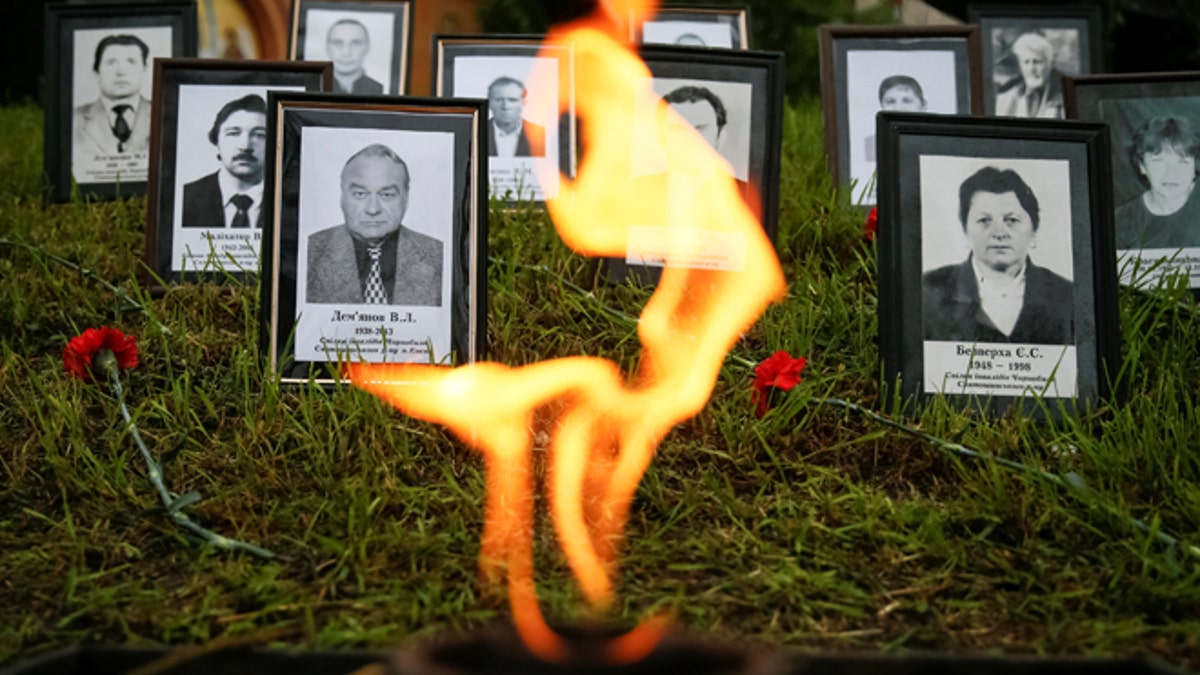
Portraits of "liquidators", emergency workers who fought the blaze at the Chernobyl nuclear reactor, are seen during a commemoration ceremony in Kiev, Ukraine, April 26, 2016. REUTERS/Gleb Garanich - RTX2BPDA
Although reports vary, there were at least 600,000 people sent in to fight the fire and clean up the worst of the nuclear plant's contamination. Those people – who became known as “liquidators” – were given a special status that meant they would receive benefits such as extra healthcare and payments. They were all exposed to elevated radiation levels. A contentious report published by members of the Russian Academy of Sciences estimated that between 112,000 and 125,000 of these "liquidators" – around 15 percent – had died by 2005.
Many of the figures in the report were later disputed by scientists in the West, who questioned their scientific validity.
7. The death toll is unknown.
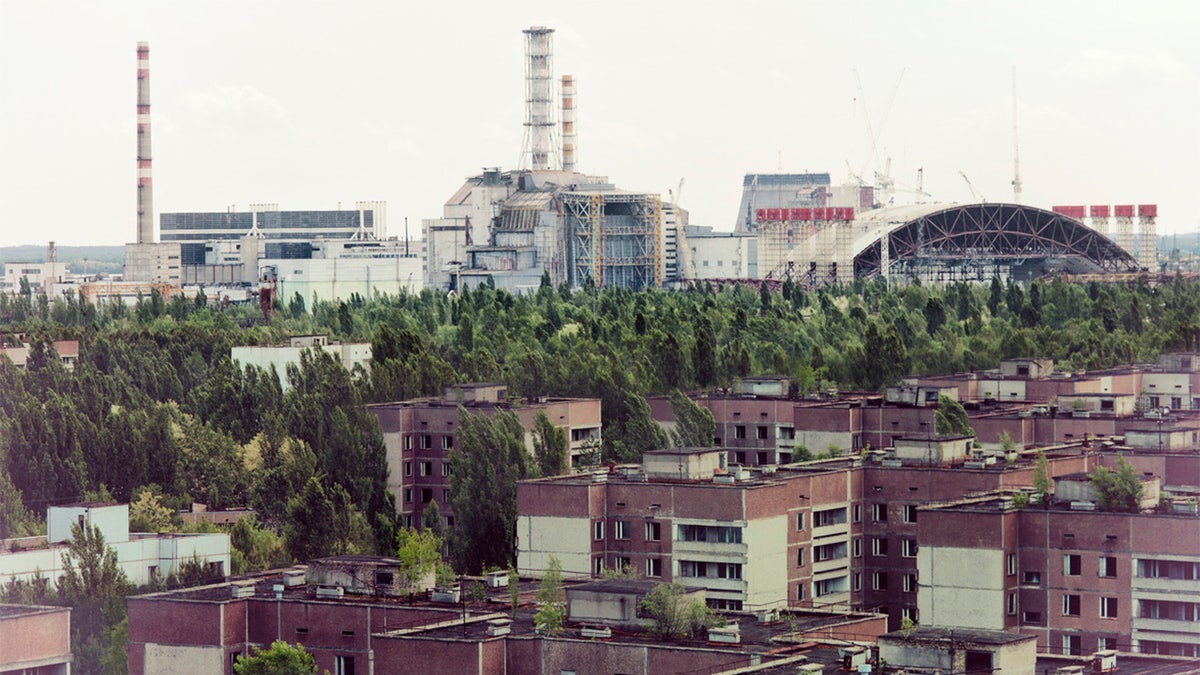
Chernobyl nuclear reactor and Pripyat ghost town
The eventual death toll from Chernobyl is subject to speculation and dispute.
Even after the last person who was alive on the day of the explosion dies, other deaths may be attributable to Chernobyl because of the radiation that has entered the food chain. The World Health Organization's (WHO) cancer research arm suggests 9,000 people will die due to Chernobyl-related cancer and leukemia if the deaths follow a similar pattern to the Hiroshima and Nagasaki atomic bombings in Japan.
The Greenpeace environmental group says the eventual Chernobyl death toll could be 90,000. Others estimate an even higher number.
8. The level of radiation was similar to Hiroshima.
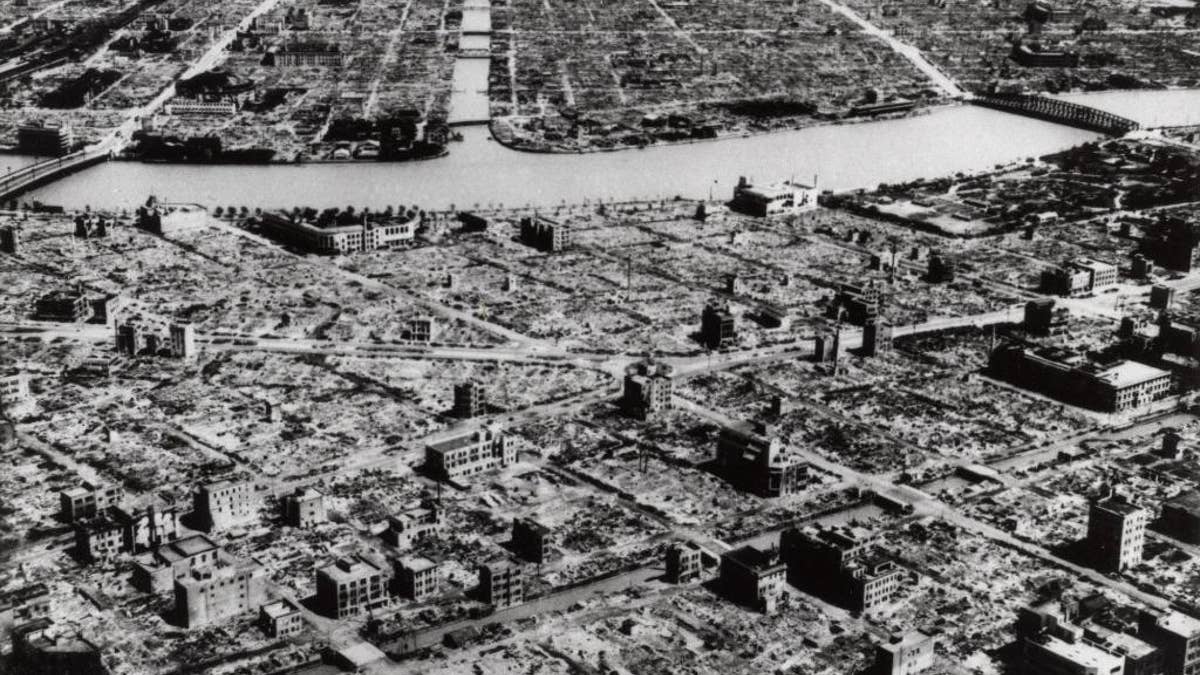
FILE - This aerial photo taken in March 9, 1945 shows the industrial section of Tokyo along the Sumida River. The nuclear bombs dropped by the United States on Hiroshima and Nagasaki in August 1945 killed about 130,000 people, secured Japan's surrender and ended World War II. Less well-known, perhaps, is Operation Meetinghouse - the firebombing of Tokyo five months earlier. (AP Photo, File) (The Associated Press)
Those exposed to radiation when Chernobyl's reactor exploded are believed to have received about 45 rem of radiation dosage on average; 45 is similar to the average dose received by survivors after the atomic bomb was dropped on Hiroshima in 1945.
While 45 rem is not enough to cause radiation sickness (which usually occurs at about 200 rem), it still increases the risk of cancer by almost two percent.
9. People still live there illegally.

In this photo taken on Tuesday, April 5, 2016, Viktoria Vetrova, with her children, Bogdan, center, and Kolya, right, goes home after milking a cow in Zalyshany, 53 km (32 miles) southwest of the destroyed reactor of the Chernobyl plant, Ukraine. Viktoria Vetrova, a housewife, keeps two cows in order to help feed her four children. Vetrova’s 8-year-old son Bogdan suffers from an enlarged thyroid, a condition which studies have linked to radioactivity. (AP Photo/Mstyslav Chernov) (The Associated Press)
Although the vast majority of the exclusion zone remains devoid of humans, a few hundred residents have returned illegally. Even after the evacuation of thousands, some people have never left. Despite its illegality, about 130 to 150 people still reside in the area. Many of those residents are women who still farm their ancestral land in their 70s and 80s. And, just outside of the exclusion zone, there are a number of new arrivals.
10. Abortions were performed on women after the incident.
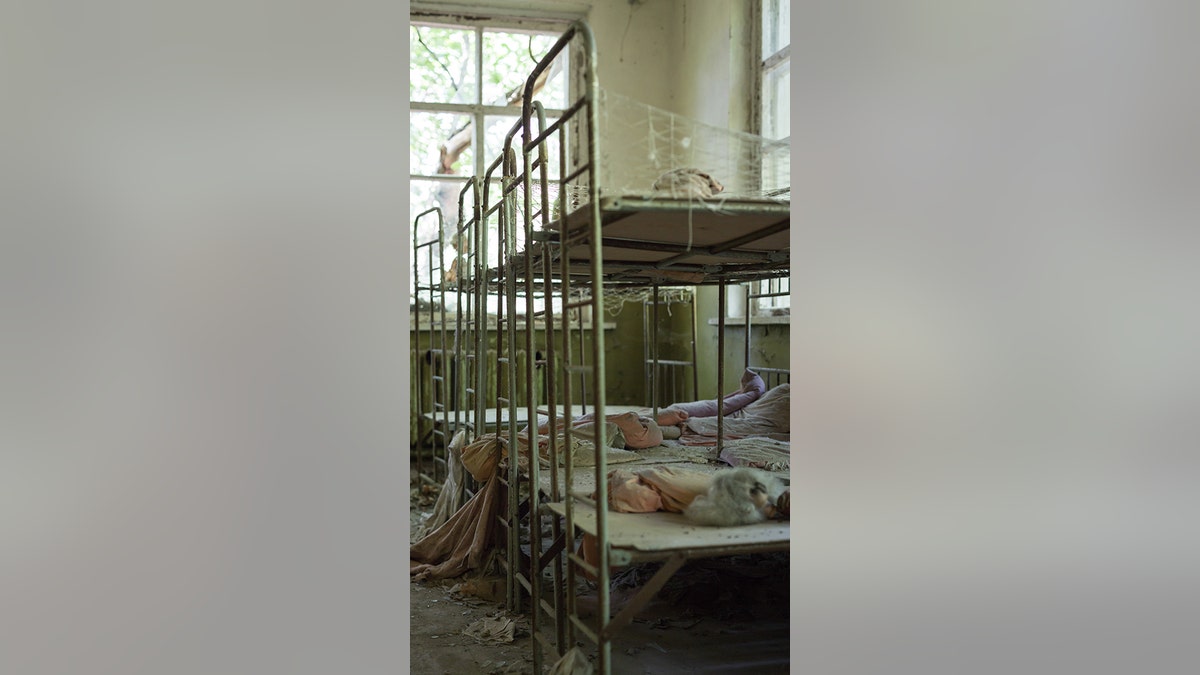
Ukraine: Beds in a former daycare center slowly rust away. HAUNTING photographs show how nature is reclaiming a town abandoned after a nuclear disaster 33 years ago. Dutch photographer Erwin Zwaan, 47, traveled to the 18-mile exclusion zone around Chernobyl in Northern Ukraine in 2016 and 2018 to photograph the ghostly ruins. (Credit: Mediadrumimages / Erwin Zwaan)
It's been estimated that anywhere from 100,000 to 200,000 abortions were performed on women after the incident because doctors told them their babies were exposed to radiation and could be born with birth defects. There was "radiophobia," but the WHO says there is no evidence that birth defects were more common in babies delivered by women who were near Chernobyl.
The BBC, National Geographic, Reuters, Live Science, The History Channel, and The Associated Press contributed to this report.

